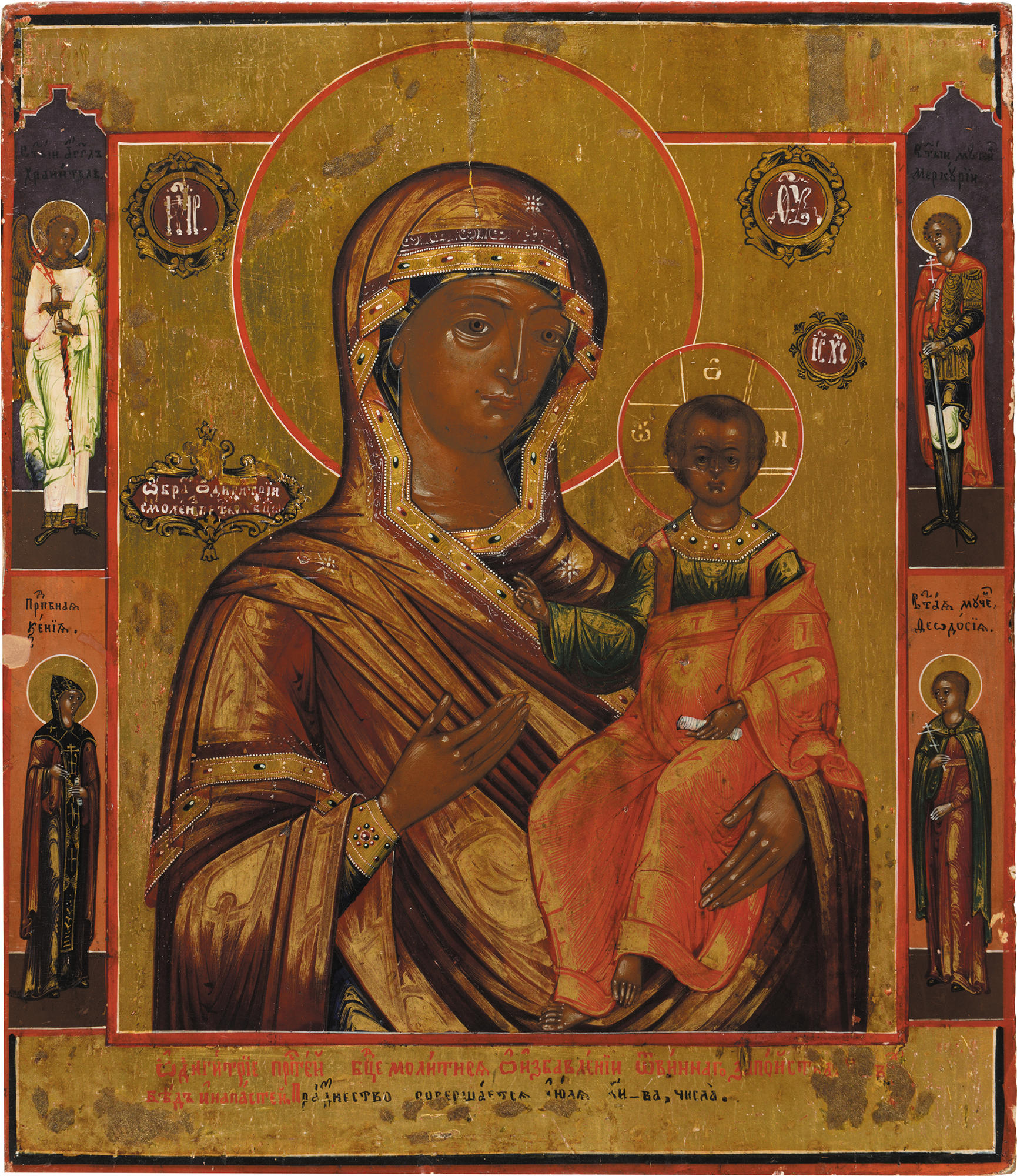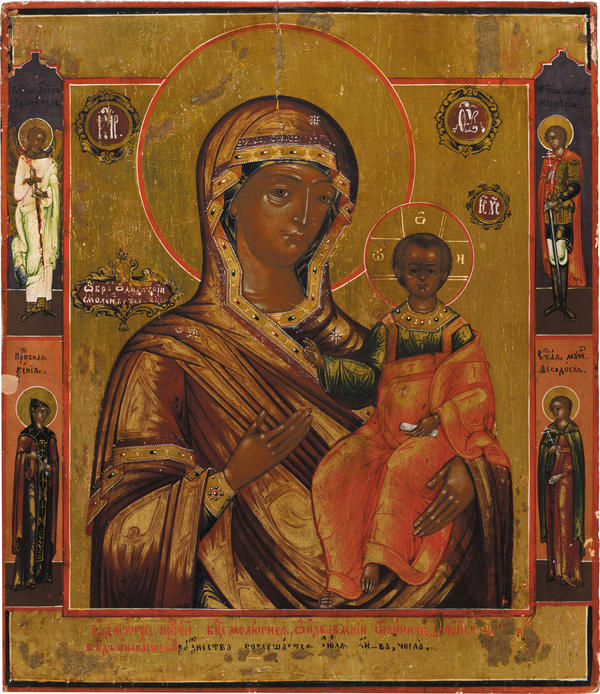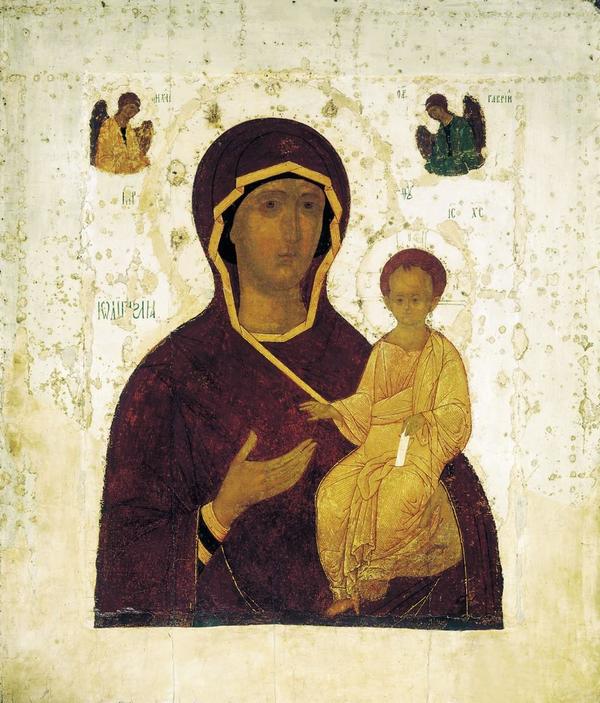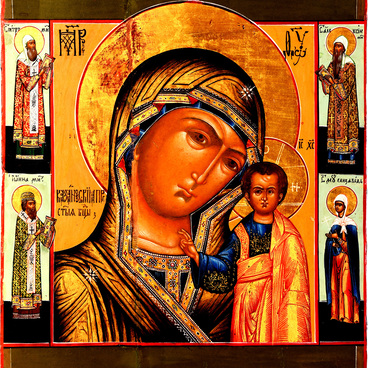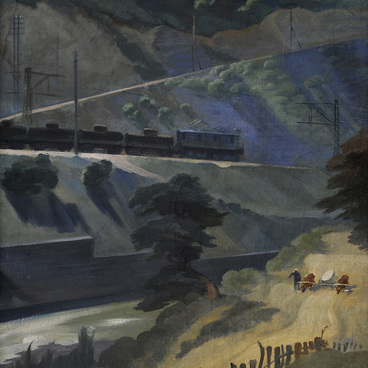Our Lady of Smolensk became the most solemn and strict image of Hodigitria, which translates from Greek as ‘She Who Knows the Way’. This was the name given to the type of icon where Virgin Mary was painted frontally together with the Infant Christ.
Hodigitria, Our Lady of Smolensk
Время создания
Mid-19th century, Nevyansk.
Размер
27,2x23,7 cm
27.2х23.7х3.5 см
27.2х23.7х3.5 см
Техника
Wood (a two-part board without a cut-back centre portion), 2 strips of wood on the icon back. The canvas is not visible, levkas (primer), tempera, carving on the primer, gilding and colouring of gold.
Коллекция
Выставка
#3
Unknown Author
Hodigitria, Our Lady of Smolensk
#7
#2
According to legend, the very first Hodigitria was depicted by the evangelist Luke on the Blachernae Icon of Our Lady, first mentioned in 439. It was for a long time kept in Antioch, the native city of Luke, then it was brought to Jerusalem and Constantinople and placed in the Blachernae church – this was the way the image got its name.
According to legend, however, another Hodigitria - the Smolensk icon of Our Lady, brought from Byzantium - appeared in Russia even before the Blachernae icon. From the 12th century it has been kept in the Dormition Cathedral of Smolensk.
#4
Smolensk icon. Dionysius, 1482. Source: wikipedia.org
The Orthodox Christians believed that the icon of Our Lady of Smolensk helped, in 1239, to protect the city from the invasion of troops led by the Mongol commander Batyi. It was considered the protectrix of Russia’s western borders and believers also prayed with it to stop both interstate and family conflicts. The icon was lost during The Great Patriotic War with its whereabouts unknown today. However, there are many famous reproductions of the original image, for example, Our Lady of Hodigitria, created by the icon painter Dionysius in the late 15th century.
#5
The icon of Our Lady of Smolensk from the collection of the Orenburg Museum was painted by a Nevyansk master in the middle of the 19th century. This is a traditional image of the Virgin Mary: her head is tilted to the right; she is looking in front of her holding the Infant Christ in her left arm. Both Our Lady and Christ are dressed in ceremonial clothes, painted with gold powder (gold paint). Christ’s long cloak, the himation, is off the shoulder. This version of the image emerged in the Russian icon painting in the 16th century.
#8
Orenburg Regional Museum of Fine Arts
читать дальшескрыть
00:00
00:00
1x
Hodigitria, Our Lady of Smolensk
Время создания
Mid-19th century, Nevyansk.
Размер
27,2x23,7 cm
27.2х23.7х3.5 см
27.2х23.7х3.5 см
Техника
Wood (a two-part board without a cut-back centre portion), 2 strips of wood on the icon back. The canvas is not visible, levkas (primer), tempera, carving on the primer, gilding and colouring of gold.
Коллекция
Выставка
Открыть в приложении
Поделиться
